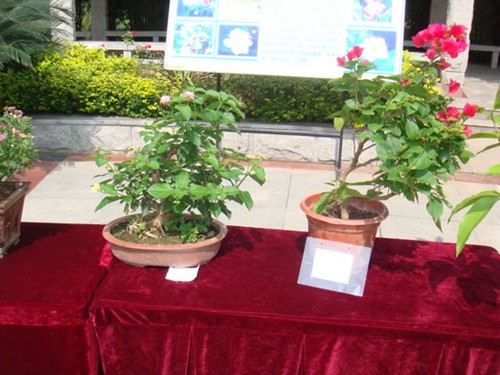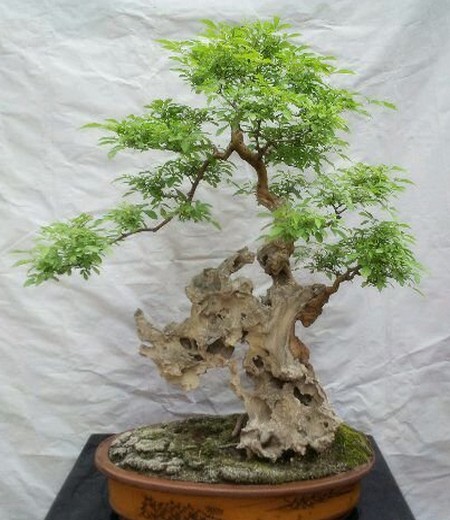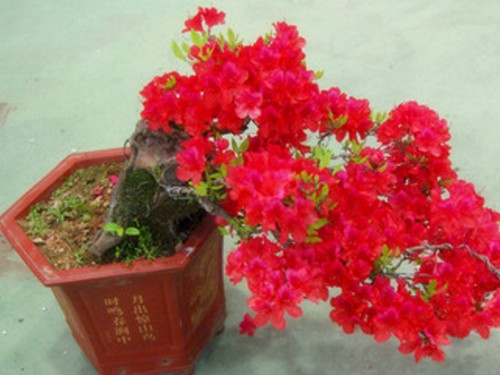Propagation mode of potted five-color plum
There are often multicolor changes in a cluster of inflorescences, so the alias is also called five-colored plum and colorful flowers; at the same time, the branches and leaves contain a special irritating smell, so Ma Yingdan also has aliases such as smelly grass and smelly Jinfeng, flowering from June to October.

Potted five-color plum should turn the pot before leaving the house in spring, apply sufficient base fertilizer, and prune the branches appropriately. If it is a small seedling, it should be topped to promote lateral branches. For the formed plants, attention should be paid to the thinning of weak and diseased branches and proper truncation in order to maintain a good tree shape and promote more new shoots. If you do not leave seeds after flowering, you should pick off the residual flowers to facilitate the extraction of inflorescences from the axils of the lower leaves, keep plenty of sunshine and moist soil during the growing period, and not be too dry, especially during flowering. If it is too dry, it is easy to wilt and affect flowering.
To sow and reproduce:
Sowing can be sowed in pots with high humidity and temperature at the end of autumn, or in spring. Sowing seedlings in South China can be used to plant flower beds, and flowers can be seen in September of that year. After the fruit is ripe, it is picked and retted, soaked in water and scrubbed to remove the pulp, and the seeds are obtained. To avoid losing water, seeds can be sowed with picking in autumn, or stored in mixed sand, and sown again in spring. The temperature should be kept above 20C in the germination stage after sowing. The germination rate is about 60%, and the seedlings sown in the south can blossom in autumn.
Cutting propagation:
The cuttings are carried out more than May. One-year-old branches are taken as cuttings, every two sections are divided into one section, the two leaves of the upper section are retained and half of them are cut off, and the lower section is inserted into the matrix of plain sandy soil or fully mature humus soil, shading, film moisturizing, heat preservation, keeping the cutter moist and air humidity at 80%-90%, and sprouting roots and shoots in about 1 month. If the seedlings want to plant flower beds in the open field after survival, they should first be planted in a small flowerpot. When the roots of the cuttings grow to the 5cm or so and some of them are brown, they are transplanted into the pot and maintained in the shade for a period of time. After the new roots are developed and enriched, the white roots protrude from the bottom hole, and then take off the pot and plant.
Striping propagation:
The plant has many branches and takes root in the soil, so the soft branches are cut and pressed into the soil, and the roots are cut off after the root system grows.
Five-color plum bear pruning, as long as pay attention to pruning can make five-color plum grow healthier, plant type is also more beautiful, flowering is also more, five-color plum breeding is simple, do not need how to spend thought, like friends might as well have a try.
Time: 2019-06-12 Click:
- Prev

Modeling method of Bauhinia bonsai
Vitex negundo, that is, Vitex negundo, is widely distributed in China and has strong vitality. It is one of the commonly used miscellaneous tree species for bonsai production. Its adaptability is very strong, and the requirements for soil are not strict. Potted bauhinia is better with humus soil with loose texture and good water permeability, and the pot pot is suitable for soil basin or cement pot. Before planting
- Next

How to fertilize Yingshanhong bonsai
Yingshanhong, also known as rhododendron, belongs to the genus Rhododendron of the rhododendron family. It is an evergreen, semi-evergreen or deciduous tree and shrub, one of the top ten famous flowers in China. When the spring returns to the earth and the warbler calls the cuckoo to cry, it is the time when the azaleas are in full bloom, and the flowers are full of spring, which is pleasing to the eye. China is the country with the largest distribution of azaleas, with more than 530 species
Related
- Fuxing push coffee new agricultural production and marketing class: lack of small-scale processing plants
- Jujube rice field leisure farm deep ploughing Yilan for five years to create a space for organic food and play
- Nongyu Farm-A trial of organic papaya for brave women with advanced technology
- Four points for attention in the prevention and control of diseases and insect pests of edible fungi
- How to add nutrient solution to Edible Fungi
- Is there any good way to control edible fungus mites?
- Open Inoculation Technology of Edible Fungi
- Is there any clever way to use fertilizer for edible fungus in winter?
- What agents are used to kill the pathogens of edible fungi in the mushroom shed?
- Rapid drying of Edible Fungi

